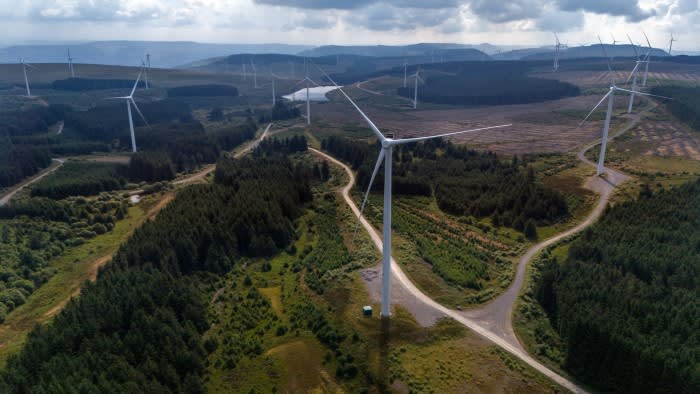The big banks of the world have been using clever financial wheezes to offload credit risk for decades. Now they are giving some of these products a makeover in the hope of attracting ethically minded investors.
In significant risk transfers (SRTs), also known as credit risk transfers, investors assume some of the default risk on a portfolio of loans, in return for regular interest payments.
This reduces the equity levels banks need to maintain against these loans, potentially enabling bigger cash payouts to shareholders or for more loans to be made.
Santander, Crédit Agricole and Société Générale are among the banks that are now issuing SRTs with a sustainability or social impact dimension, such as using the extra lending capacity to invest in renewable energy projects.
In this way, they hope to tap demand from pension funds and other investors for products with an environmental, social and governance (ESG) slant.
However, while SRTs with ethical credentials have become more common, the industry is far from achieving consensus on which products should count.
“There’s no standard. This is very much working with the banks on what is possible,” said Mascha Canio, head of credit and insurance linked investments at Dutch pension fund investor PGGM, one of the largest buyers of SRTs.
Banks have been using SRTs since the 1990s, but issuance has grown in recent years as they have searched for new ways to offload risk in the face of stricter capital requirements.
“SRT transactions done by banks, nowadays, will always have some ESG overlay, to the extent possible,” Dennis Heuer, a partner at White & Case, told the Financial Times. Claims about sustainability and other ethical credentials in SRT transactions have really taken off in the past year, he added.
According to Leanne Banfield, a structured finance and derivatives partner at Linklaters, the trend “tends to be driven more by investors than the banks”. Asset managers, pension funds and insurers like the high interest rates that ethical and sustainable SRT products often pay, she said, and the opportunity to count them towards their ESG goals.

SRTs marketed as helping society or the environment come in a variety of flavours.
“We look at SRT as one of the tools that we embed into everything that we want to push as part of our ESG trajectory and commitments,” said Florence Coeroli, UK head of SocGen’s distribution and credit solutions business.
Some banks have excluded assets with exposure to industries such as coal from the underlying loan pool, Banfield said, in order to classify an SRT as sustainable.
Others have said they will use additional lending capacity made available by an SRT transaction to offer loans with a positive environmental or social impact, such as renewable energy projects or affordable housing.
“We’ve taken exposure to a lot of those types of assets, including renewables, affordable housing, and other social infrastructure,” said Molly Whitehouse, a founding member of Philadelphia-based alternative asset manager Newmarket Capital.
Newmarket has specialised in ESG-themed SRTs, with renewable energy making up the largest share of its investments in these products, she said.
A recent deal between BRD, a Romanian subsidiary of SocGen, and the International Finance Corporation, the private finance arm of the World Bank, used an SRT to free up lending capacity for BRD to finance what the IFC called “impactful sustainability-related projects”.
Under the deal, the IFC provided BRD with a risk guarantee on an up to €700mn portfolio of small business and corporate loans. The resulting freed-up capacity would be used to lend up to €315 million to climate-related initiatives and small businesses owned by women, the IFC said.
Some SRT products marketed as sustainable have come in for criticism. “How do you show that the bank wouldn’t have done that [renewable loan] anyway?” Banfield said.
Another option is to sell a product with an underlying portfolio that is made up exclusively of sustainable loans. However, Banfield said, most banks “just don’t have enough of these types of loans to make meaningful portfolios”.
PGGM has tailored its investment strategy to each bank, Canio said, adding, “we are not holding back from a blended portfolio where some parts are greener than others”.
Other investors have chosen structured SRTs that come with a reduction in the interest rate, or coupon, paid to the investor if the bank meets certain sustainability targets.
The way these risk transfers are structured — and whether they qualify as investments with a positive social impact — remains a matter left up to the bank and the investor.
“For now, sustainable securitisation means something different to each investor,” Banfield said, adding. “There is no regulatory framework in place.”
“The market doesn’t really know what sustainable securitisation means, and is kind of having to figure that out. In a way, that’s quite an exciting opportunity.”


